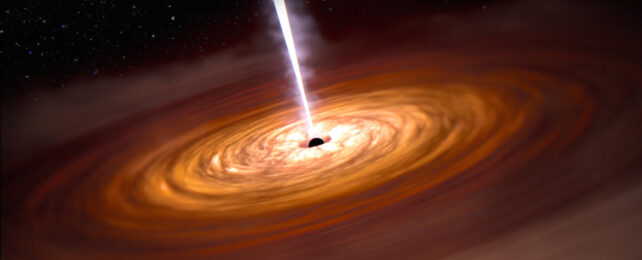It's shaping up to be a huge week for space and physics news, with two major press conferences about the Universe announced for Thursday 29 June.
They may share a date, but they're both very separate announcements, and from what we can tell, very distinct discoveries that will be shared with the public.
Let's dive in and get up to speed with what we know so far.
Gravitational wave discovery
Updated 29 June 2023: This announcement has been made, and it's official! Scientists have detected the background hum of the Universe. Read more here.
Mark your calendars and get ready for a major announcement from the NANOGrav collaboration on June 29th! #nanograv
— NANOGrav PFC (@NANOGrav) June 21, 2023
Detecting this background hum is a huge deal as it could revolutionize our understanding of the earliest days of the Universe.
"For example, electromagnetic radiation does not provide a picture of the Universe any earlier than the time of last scattering (about 400,000 years after the Big Bang). Gravitational waves, however, can give us information all the way back to the onset of inflation, just ∼10-32 seconds after the Big Bang," theoretical physicist Susan Scott of the Australian National University and the ARC Centre of Excellence for Gravitational Wave Discovery told ScienceAlert's senior journalist Michelle Starr back in January.
Teasing out this faint, background hum from all of the other 'sounds' in the Universe was incredibly challenging. But scientists were able to do it using pulsar timing arrays.
Pulsars are a type of neutron star, the remains of once-massive stars that have died in a spectacular supernova, leaving just a dense core behind.
These rotating stars act like cosmic lighthouses, with their beams of radio emissions sweeping over Earth at precise intervals.
Gravitational wave ripples should, in theory, produce tiny irregularities in the timing of these pulsar flashes.
One pulsar on its own wouldn't signal much, but a large number of pulsars all showing similar inconsistencies could represent the kind of gravitational waves we'd expect to see produced by the mass merging of black holes in the early Universe, as Michelle Starr explained.
While the researchers are stopping short of claiming they've detected gravitational waves just yet, they've got a very promising fingerprint, and more data should reveal a clearer picture.
Neutrino discovery
Update 29 June 2023: The second announcement is in! We've officially detected high-energy neutrinos coming from without our own galaxy.
They've given us the first neutrino map of the galactic plane and also hint at the origin of mysterious cosmic rays.
The discovery was made by the IceCube Neutrino Observatory built deep within the Antarctic ice.
This particle detector looks for neutrinos; subatomic particles that are incredibly challenging to detect due to their lack of charge and a mass that's virtually non-existent.
This specter-like ability to pass through our world en masse and unnoticed has earned neutrinos the nickname of 'ghost particles'. It also makes them ideal subjects to study distant cosmic events as their path and characteristics remain relatively unchanged by their surroundings as they fly through space.
Neutrinos are emitted as a part of the beta decay process that turns neutrons into protons – which makes them one of the most abundant of subatomic particles in the Universe, with tens of billions hitting your fingernail every second without you ever noticing.
We've previously detected neutrinos from distant quasars, particle colliders, and even our own Sun. They're even a candidate for the mysterious material known as dark matter.
You can re-watch the announcement here.

